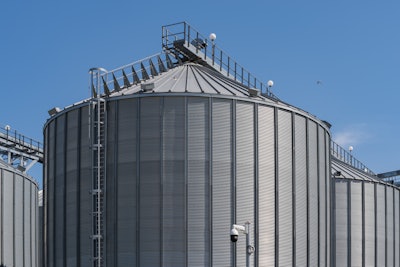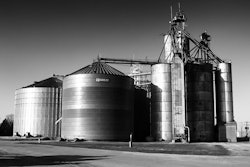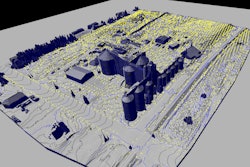
The cost of storing grain, commonly referred to as thecost of carry,has soared to record highs due to rising interest rates, high commodity prices and increasing costs for labor, insurance, transportation and energy.
That is putting a significant squeeze on grain elevators, which may be forced to lower their local bids on grain to manage through the unfavorable economics of holding commodities.
Interest-related cost of carry soars to record levels
According to anew report from CoBank’s Knowledge Exchange, the interest-related cost of carry in the 2023-2024 crop year will increase 21% for corn, 42% for soybeans and 50% for all-wheat, year-over-year.
Each of those costs is estimated to be the highest on record.
The projections are based on the forecasted average annual interest rate for grain merchandisers of 7.75% for the 2023-2024 crop year, and USDA’s marketing year average price forecasts of $4.80/bushel for corn, $12.10/bushel for soybeans and $8/bushel for all-wheat.
Financing the ownership of corn, wheat and soybean inventories is a major cost of carry for grain elevators. Interest expense as a percentage of the total cost of carry can vary widely among grain merchandisers and between crop years. But it can typically comprise one-quarter to one-third or more of a grain elevator’s total cost of storing grain and oilseeds.
“For grain elevators, the sharp rise in interest rates couldn’t have come at a worse time as they borrow higher-priced funds on commodities that have also remained at historically high prices,” saidTanner Ehmke, lead grains and oilseeds economist for CoBank.
“And while grain elevators are motivated to move inventory as fast as possible to lower carrying costs, processors and end users will want to delay ownership of commodities to reduce their own inventory costs.”
Persistent inverse in futures markets
The persistent inverse in futures markets, where the price of later-dated contracts are lower than spot prices, further complicates matters for grain elevators. In normal market conditions when supplies are abundant, forward futures contracts are priced higher than the nearby spot prices to account for storage costs and a small risk premium. When futures prices are lower than spot prices, farmers are motivated to sell commodities rather than hold them for future sale.
Cooperative elevators are in business to buy and market their members’ grain. That means they will be obligated to carry inventory despite the economic disincentive of doing so. Holding commodities in high-interest rate environments also ties up a company’s working capital, which can put a strain on other business operations. This is especially problematic in volatile markets when liquidity is needed for managing margin calls on futures hedges.
“It’s a challenging situation for cooperative grain elevators as well as farmers, because it comes at a time when farmers are also facing higher costs,” said Ehmke. “Co-op managers will need to closely scrutinize their operating costs and impose greater discipline on cost wherever possible. And if they need to lower their bids and widen basis to cover storage costs, they should communicate early and consistently with farmer members who will be impacted.”
The positive news on carrying costs is that the Federal Reserve is expected to hold interest rates at their current levels for the foreseeable future. And USDA is forecasting corn, soybean and all-wheat prices to drop for the 2023-2024 crop year from the year prior, which will take some pressure off carrying costs.





















